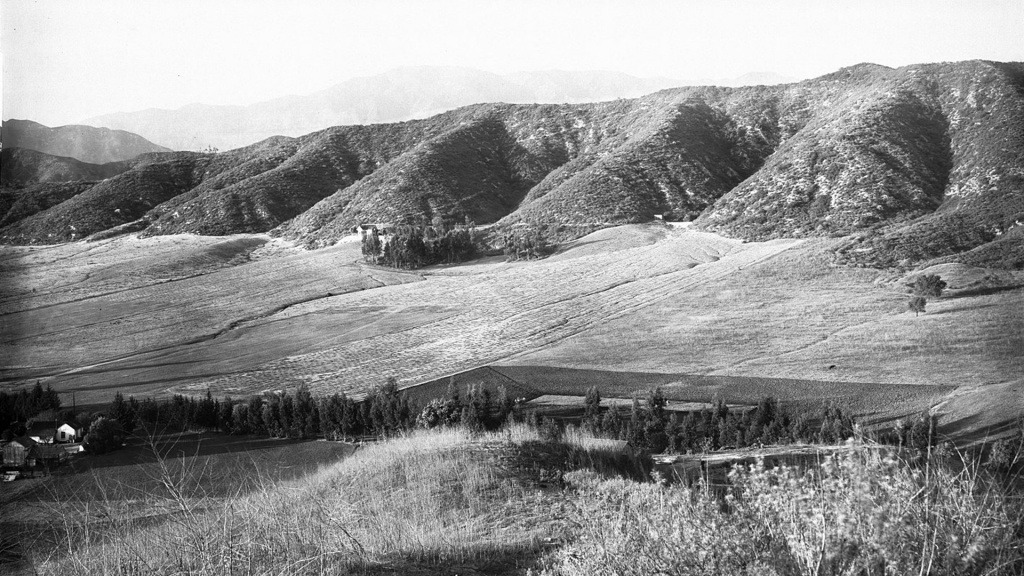A CULTURAL & HISTORICAL OVERVIEW OF EAGLE ROCK'S HILLSIDES & TOPOGRAPHY

— THREE DIFFERENT CULTURES OCCUPIED THE EAGLE ROCK AREA IN ITS EARLY HISTORY —
- The indigenous ancestry of the Gabrieleno band of Indians/Kizh Tribe, also identified as Tongva and their trade neighbors, the Tataviam peoples were here when Portola first explored the area in 1769. (A pre-contact indigenous hand-axe was uncovered on the hillside within 1000 feet of the proposed development site on Onteora Hill – a CEQA issue).
- The Spanish/Mexican/Californio explorer-pioneers settled in the area after 1770 and the Verdugo family Rancho San Rafael Spanish land grant covered most of the land base.
- Later those of other European ancestry migrated into the area after the American Expansionism period in c. 1850 and the land eventually was partitioned to prominent citizens of the time such as Beaudry, Glassell, Chapman and Dreyfus. Today, Eagle Rock is a multi-cultural community.
There is NO EVIDENCE of a cultural resource(s) survey(s) on the Onteora site, despite the fact that a prehistoric ¾” grooved hand axe (AD 1200 – American Southwest; and on exhibit and the Natural History Museum of Los Angeles County) was found within 1000 feet of Onteora Hill at 4564 Wawona St. It was identified as a trade item into the area. It is unclear if the developer has consulted with local Kizh/Tongva and Tataviam tribes under AB52, and California Public Cultural Resources Code Sections 21000-21004 to discuss whether the area was developed as a possible trade, food gathering site. It is well-documented there was Uto-Aztecan speaking Kizh (Gabrieleno/Tongva habitation sites in Northeast Los Angeles, identified as Hahamonga, Tobgna? Harasgna and Yangna (downtown) (King, 2014 Ethnographic Overview of The Los Angeles National Forest: Tataviam & San Gabriel Mountain Serrano.Ethnohistory). This is clearly a CEQA issue.

— A FULL CEQA REVIEW IS MANDATED —
Any additional archaeological cultural resources would be further destroyed during site grading.
During consideration of the project, tribal and other commenters should be consulted as to whether it is a tribal cultural resource and assert whether the mitigation measures for cultural resources are adequate to avoid the impact. The mitigation should call for tribal monitors during construction, notification of likely descendants in case of the discovery of human remains, and data recovery. (For legal review see: Save the Agoura Cornell Knowll vs, City of Agoura Hills – March 17, 2020.)

— ONTEORA HILL’S TOPOGRAPHY —
Eagle Rock’s name derives from the geographical rock formation located on the eastern slope of the area. There are other such formations and one of these is Pelican Rock on the eastern slope of the Onteora Way property above College View.
- Natural streams, springs, and other waterways were prominent features before cemented over and drainage was diverted to the Los Angeles River and eventually the Pacific Ocean. Water pooling nonetheless is still evident in some parts of the area during infrequent rainstorms, especially near the Pelican Rock formation.
- The Onteora Way hillside property sits on the Hollywood-Raymond earthquake fault, and the hillside formations consist of Topanga/Duarte shale that is a mixture of sand, gravel and cobble deposited during the middle Miocene (10-15 million years ago). The conglomerate sandstone formations were deposited in a shallow, active marine environment. (2014: Warren & Parrello).
- Processes of vertical uplift, cementation, wind erosion and other weather processes created the hillside and as a result, it and other hillsides in the Eagle Rock, Glassell Park, Highland Park areas are subject to landslides.
- Onteora Way is a city-designated earthquake-induced landslide area
- Onteora Way is in a Very High Fire Hazard Severity Zone
Many L.A, neighborhoods owe their names to long-ago real-estate moguls like Henry Huntington and I.N. Van Nuys, who subdivided unspoiled land and exploited it to the fullest. Others, like Elysian Heights or Miracle Mile, were conjured up as marketing tools to lure prospective homeowners to a would-be paradise. Eagle Rock is one of the few areas named in honor of the natural beauty that surrounds us. Apart from the bluff dominated by the Eagle Rock itself, the ridge beyond Kerwin Place and Round Top Drive is now the last unspoiled hillside our community has left, where nature has been allowed to stay intact — where the trees and plants and animals that have been here for thousands of years still have sanctuary. If Leap of Faith is awarded a spot-zoning designation, this is what Eagle Rock — and all of us who proudly call it home — will lose forever.Ed Leibowitz, writer, Eagle Rock Resident

